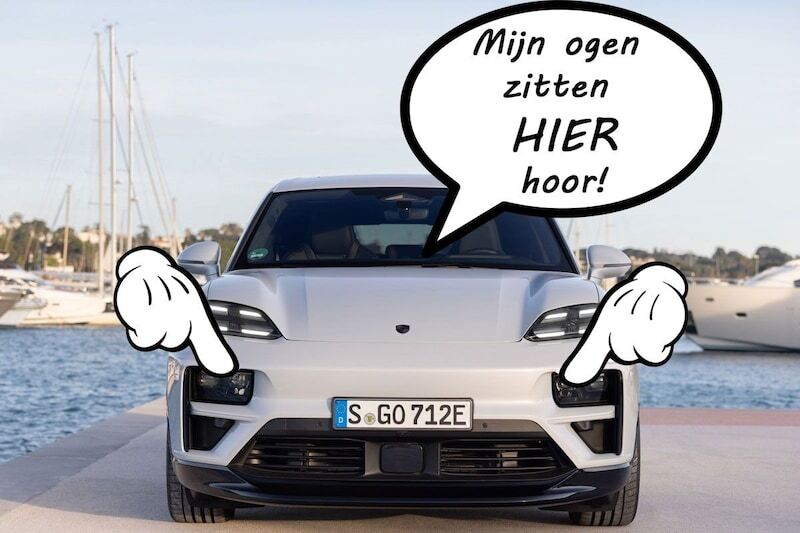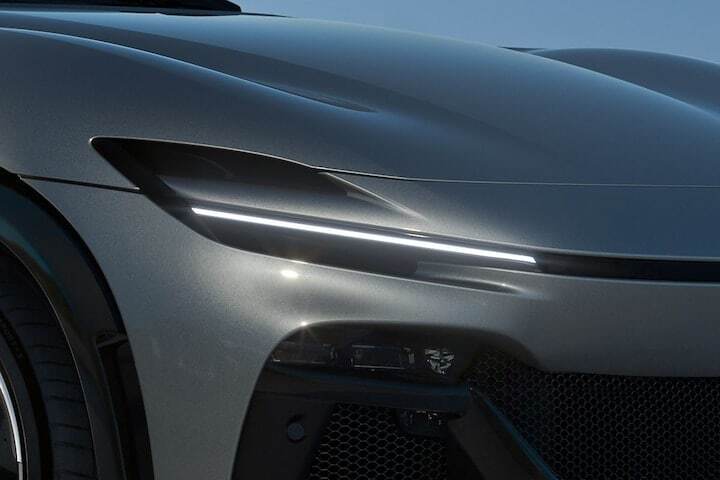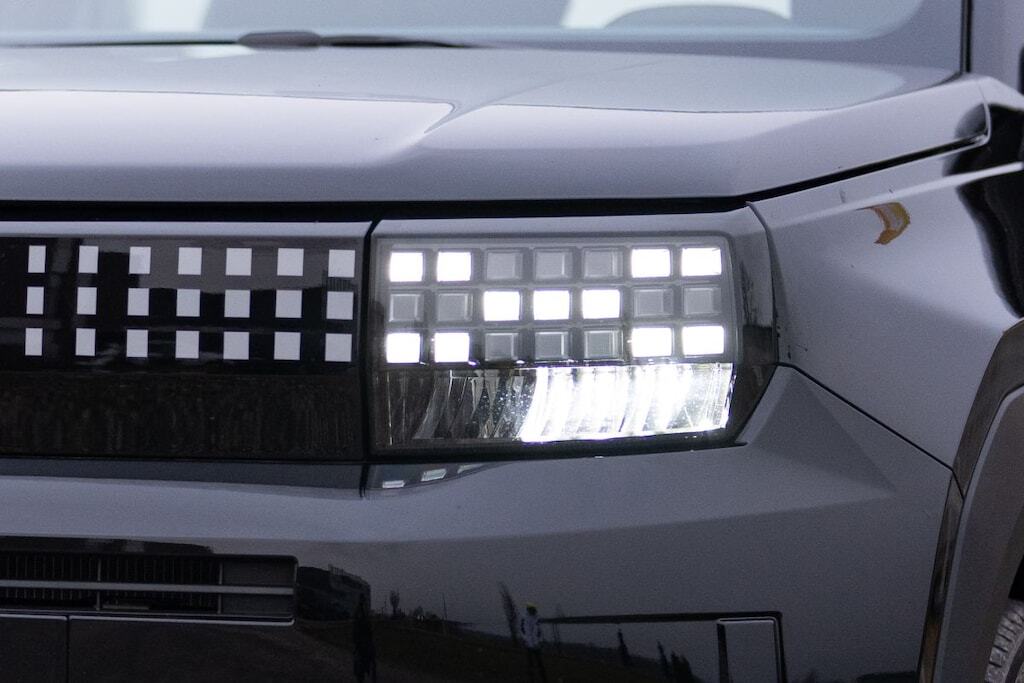
Appears different than it seems
With the Mazda 6e, we have yet another car where the actual headlights are lower than the design suggests. This is currently a trend, but it already started in 2003.
The Porsche Macan, the Ferrari Purosangue, the Hyundai Kona, and now the Mazda 6e: these are all cars with ‘fake headlights’. Of course, they all have real headlights, but they are not in the place you would expect. The mentioned cars have light units high in the nose that, to a greater (Mazda) or lesser (Kona) extent, give the impression that they are headlights, but are secretly ‘only’ daytime running lights. During the day, the image sketched by the design is in fact correct, because that’s where the light comes from. But in the evening, the situation turns out to be a bit more complicated, because the brightly piercing LEDs of the low beam are housed in a different, often hidden place in the front bumper.
Headlights that are valued in this way over multiple layers have been known for years. With a Citroën C4 Cactus or Nissan Juke, however, it is not necessarily the case that the impression is given that the actual headlights are somewhere else – although everyone can experience that differently. Here, however, it is clearer that there are two layers of lighting, none of which are camouflaged. That is different from the Macan or 6e, which both clearly give the impression that the upper units are the headlights.
Design
The reason for this is mainly to be found in the design corner. A lower headlight unit theoretically brings less glare with a high SUV, but this solution mainly gives designers the freedom to turn the higher, apparent light unit into a true work of art. Such a daytime running light can be pressed into all kinds of voluptuous shapes, while the actual headlight must have a certain size.

We therefore see this happening more and more often and in all sorts of ways, often with expensive and exclusive brands. But the Fiat Grande Panda is also an excellent example. Here, headlights and daytime running lights are indeed in one unit, but the low and high beams are hidden in a lower layer that is barely visible during the day. The visual headlights, which (if you look at it that way) form the ‘eyes’ in the face of the car, are also here the higher and particularly shaped LEDs of the daytime running lights, parking lights and indicators.

Phantom
The choice to hide headlights in this way in a bumper or air intake is therefore mainly a result of the trend to turn modern LED units into true works of art. Yet the (presumably) first car with such a deceptive layout of the headlights comes from a very different era. The Rolls-Royce Phantom that appeared in 2003 had a set of rectangular light units at the top of its extremely imposing nose. Clearly the headlights, you would think, supplemented with round ‘pits’ lower in the nose that should then be the fog lights.

However, nothing could be further from the truth: those round pits are the xenon lamps that provide the low beam, the large rectangular units house the parking light and the indicators. Here too, that seems to be mainly a design choice, because with the facelift of 2012 (Series II) the round units disappeared and all serious light functions moved to the rectangular, upper units.